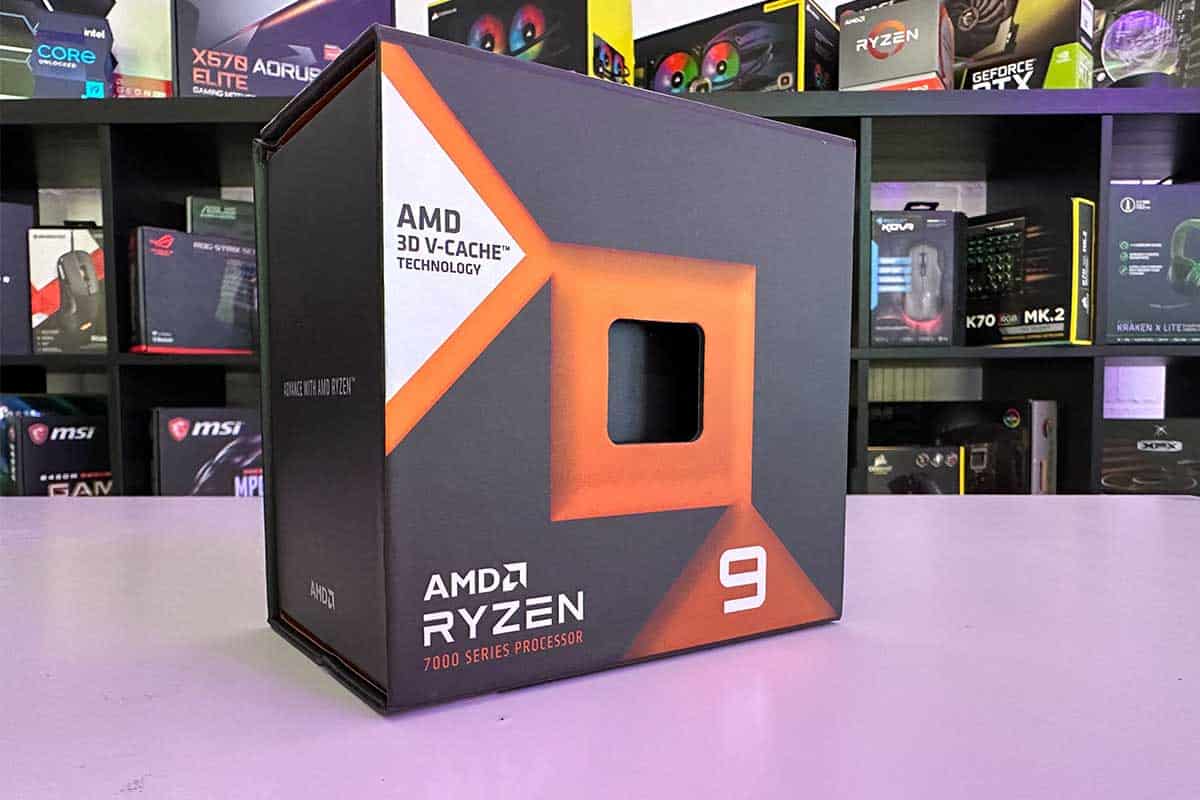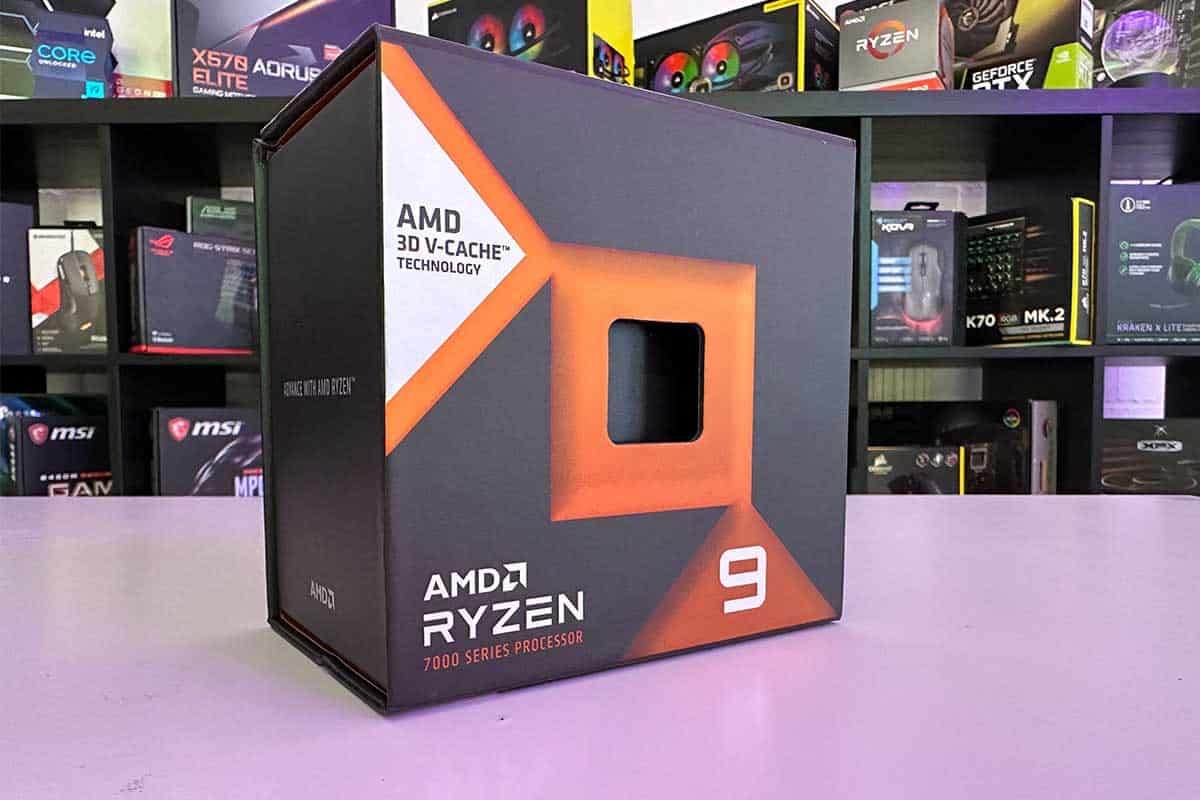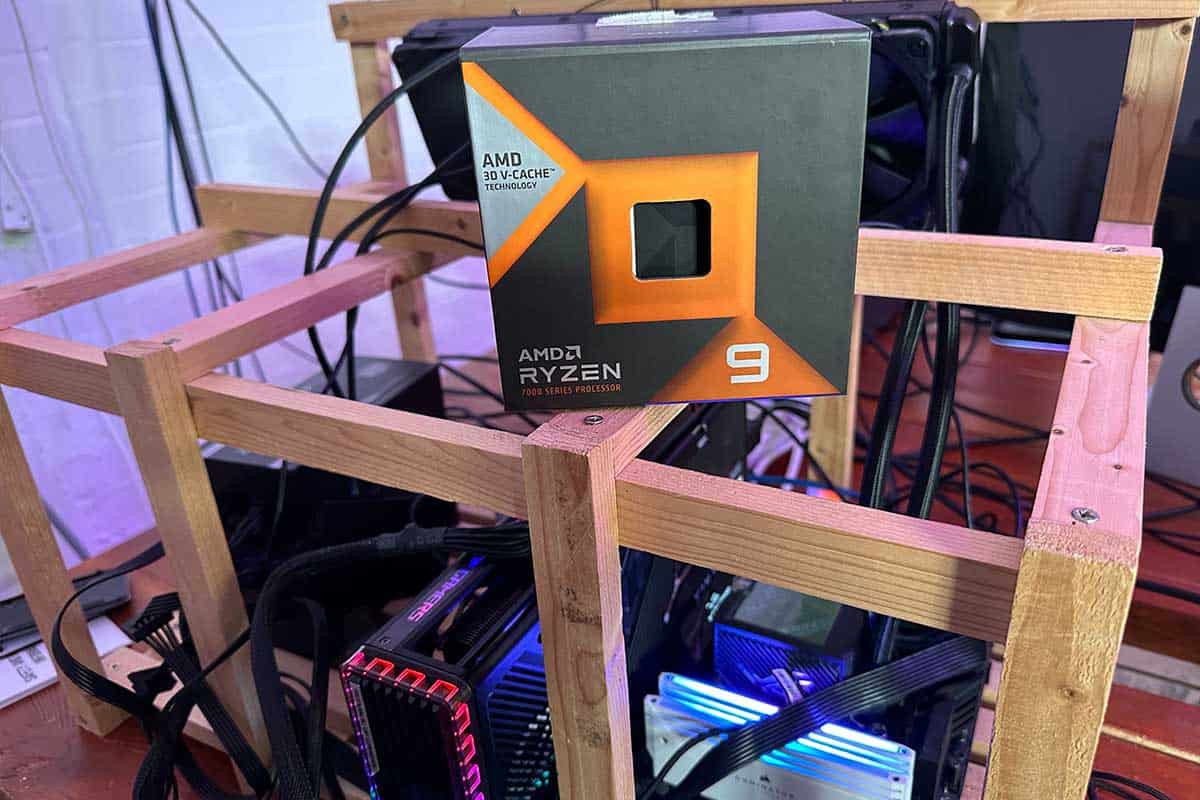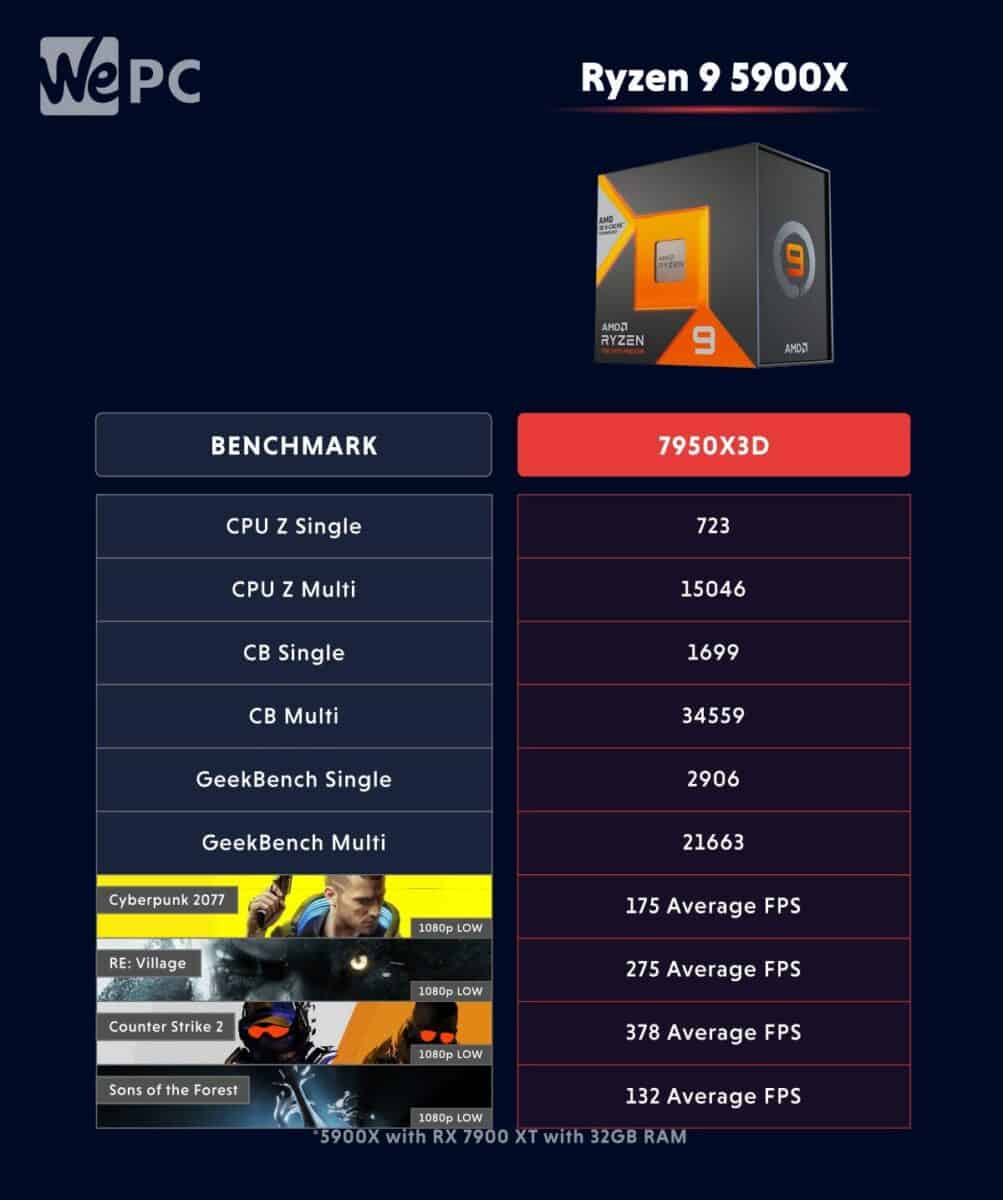
Is the Ryzen 9 7950X3D worth it in 2024?
Updated: Mar 25, 2024 4:05 pm

WePC is reader-supported. When you buy through links on our site, we may earn an affiliate commission. Prices subject to change. Learn more
The AMD Ryzen 9 7950X3D is the current flagship processor of AMD’s entire desktop lineup, if you exclude Threadripper, of course. This beat of a CPU was released just last year and has already taken the world by storm with its 16 CPU cores and 32 threads, all clocked at a max boost speed of up to 5.7GHz. – a record for AMD CPUs.
So it looks impressive on paper, but how does it actually perform? What do 32 threads look like in terms of pure gaming performance? Well that, my friend, is what we’re here for today. Here is our review of the Ryzen 9 7950X3D, just how well does it hold up today?
Pros
-
3D V-cache makes for fantastic gaming performance -
Less limited thanks to dual CCD config -
Relatively efficient
Cons
-
Expensive -
Locked to auto overclocking, no manual
If you don’t have time to read the full review, this CPU is the best of the best that AMD has to offer. It may be a little pricy, and remain that way for some time, but you almost can’t put a price on the sheer performance benefit you get when you pair the 7950X3D with the right hardware.
Ryzen 9 7950X3D performance
We’re jumping right into it because the performance is any CPUs bread and butter, and we want to waste no time in showcasing the 7950X3D’s capabilities.

The benchmarking rig on which we tested the 7950X3D consisted of the following hardware:
- CPU: AMD Ryzen 9 7950X3D
- GPU: Nvidia RTX 4070 Ti Super
- Mobo: ASUS Crosshair Extreme X670E
- Memory: Corsair Dominator Titanium DDR5 @6400MHz
We tested the Ryzen 9 7950X3D in both synthetic and real-world scenarios, to get a feel for how well this CPU performs.

Synthetic performance
Our synthetic weapons of choice today were Cinebench R32, Geekbench 6, and CPU Z. These are probably the most common synthetic CPU testing tools around. This means there should be plenty of results available to compare the 7950X3D too.
First up is everyone’s favorite table and chair render, Cinebench. The Ryzen 9 7950X3D managed a blistering score of 1,699 for the single-core, and 34,559 points for the multi-core benchmark. This is about on par with the best possible score achieved on the 14700K, which is 35,112.
Next, we have Geekbench, The Ryzen 9 7950X3D did fantastically in Geekbench 6, scoring a massive 2,906 points in the single-core benchmarks, and 21,663 in the multi-core benchmarks.
Finally, in CPU Z, we see a single-core benchmark score of 723 and a multi-core benchmark score of 15,046. Which is again, blisteringly fast, considering AMD has unfortunately been lacking in the single-core performance department lately.
Gaming performance
Now onto where the 3D v-cache in this CPU shines. The Ryzen 9 7950X3D was tested in 4 games. CS2, Cyberpunk 2077, RE: Village and, Sons of the forest. The games were tested on low settings in 1080P to make sure we weren’t GPU-bound at any point. All of the performance you are about to see hangs on the capabilities of the 7950X3D.
In CS2, my favorite rage simulator, we saw an average FPS of 378, E-sports fans eat your heart out, we’re sure you’ll be able to win plenty of rounds with frame rates in the 300s. No longer will you be able to blame your poor performance, on, well, poor performance.
In Resident Evil: Village, we saw an average FPS of 275. Admittedly, this game isn’t the hardest thing in the world to run, it just represents the typical Capcom game on the typical Capcom engine, which is very popular thanks to the Resident Evil franchise. Even still, the framerates here are nothing to be mad at.
In Sons of the Forest, a PC game that was plagued with performance issues when it first launched, we saw an average FPS of 132. Which is spectacular considering the state of the game when it launched. Though a lot of that performance has been fixed with patches, some of that can be attributed to the might of the Ryzen 9 7950X3D.
Why is the 7950X3D so good at gaming?
Well, it all comes down to that special 3D cache that AMD introduced back in the 5800X3D, you know, the CPU that was basically one generation behind the 12900K and still managed to beat it in some gaming workloads, yeah, that 3D V-cache.
The cache in most CPUs is stacked laterally, which creates access delays and capacity limitations on the standard CCD of CPUs. AMD decided to tweak this system a little, to result in better performance on the cache front.
The 3D cache in X3D CPUs is stacked vertically, reducing the access time and increasing capacity, however, it’s not without its drawbacks. 3D V-cache is sensitive to high speeds, so the CPUs have to be dialed down a notch as a result, it’s what stopped the 5800X3D from taking over the world. Forutnalty, on the 7000 series CPUs, 3D v-cache is only applied to one of the two CCDs present in these CPUs. This results in only half of the CPU being somewhat limited.
Ryzen 9 7950X3D price
The Ryzen 9, like most high-end AMD CPUs, retailed at $699, however, you can find some in the wild, or second-hand, for a little less than that. This is probably because it’s been out just over a year and Intel just released its 14900KS processor.
The best price we found was on Amazon, the Ryzen 9 7950X3D was just $567, and if you ask us, that is an absolute steal for the performance gains you will get over say a 5000 series AMD CPU or an older Intel chip.
Design
The design of the Ryzen 9 7950X3D may look drastically different from the 5000 series CPUs, with its whacky IHS design that looks like something out of Terminator, this was done to ensure cooler compatibility from AM4 to AM5. That’s right! In case you didn’t know, you can use your own AM4 cooler on the Ryzen 9 7950X, although, with a max TDP of 162w, you’d better check if your cooler would fit the bill.
Final word
though the 3D V-cache does help the 7950X3D along in certain gaming workloads, it can only do so if the game knows how to fully utilize the technology, likely excluding older games from the compatibility list. A caveat of the V-cache is the hindering of the CPU in synthetic and simulation workloads due to the sensitivity to high speeds. It is for that reason that we only recommend the X3D variant of the 7950X for pure gaming workloads. A standard 7950X will suit you much better if you want a balance of workstation and gaming.






